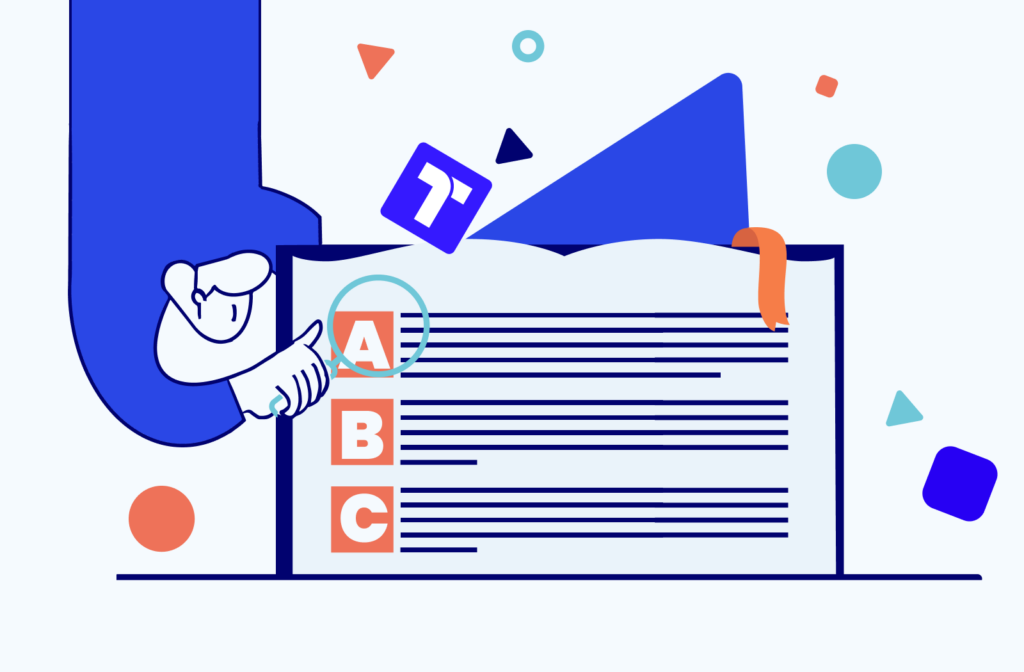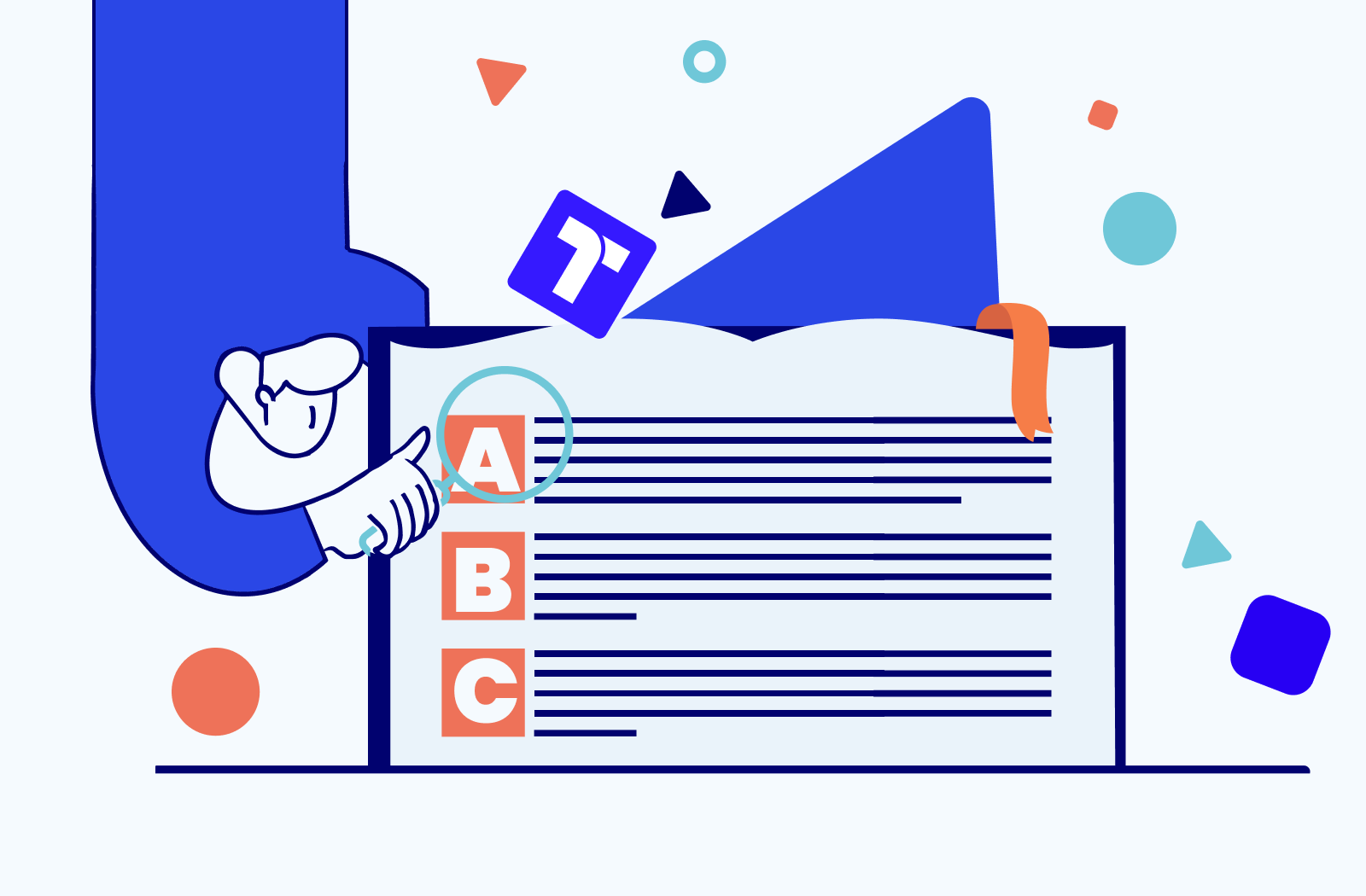
Welcome to our B2B Payments Glossary, where financial jargon finally drops its suit and tie! Let’s decode and unpack the lingo and make B2B payments and your BNPL experience smooth and understandable — but with fewer impulse buys!
Our B2B Payments Glossary gives you concise definitions of top terminology – and acronyms – you may come across in the B2B payments world while running your SME.
A | B | C | D | E | F | G | H | I | J | K | L | M | N | O | P | Q | R | S | T | U | V | W | X | Y | Z
A
Accounts Payable (AP)
Money owed by a business to its suppliers.
Accounts Receivable (AR)
Money owed to a business by its customers.
Asset-Liability Management (ALM)
The process of managing financial risks in the balance sheet.
Automated Underwriting
The use of computer algorithms, software, and artificial intelligence to assess the risk of lending to a potential borrower, limiting the need for manual review.
B
Business-to-Business Payments / B2B Payments
Transactions between two businesses for goods or services.
Bank Transfer
Moving money from one bank account to another.
Bankruptcy
A legal status for a person or entity that cannot repay debts.
Blockchain
A digital ledger technology used for secure online transactions.
Broker
A service facilitating b2b trade, usually across countries or regions.
Buy Now, Pay Later (BNPL)
Buy Now, Pay Later – shortened to BNPL – is a financing option that allows customers to make purchases and pay for them at a future date, often interest-free. Read more about BNPL here!
C
Capital Expenditure (CapEx)
Funds used by a company to acquire or upgrade physical assets.
Capital Lease
A lease classified as a purchase by the lessee, meaning it appears on the balance sheet as an asset.
Cash Flow
The total amount of money being transferred into and out of a business.
Cash Before Shipment
The seller will only ship the goods after receiving payment from the customer.
Cash Management
The process of collecting, managing, and investing a company’s cash.
Chargeback
When a customer disputes a transaction and demands a refund.
Clearing
The process of reconciling a transaction between buyer and seller.
Commercial Card
A credit card used by businesses for purchases.
Collateral
An asset offered to secure a loan or as a guarantee for repayment.
Credit Analysis
The process of evaluating a potential borrower’s ability to repay a loan.
Credit Limit
The maximum amount of credit a financial institution extends to a client.
Credit Risk
The risk of a loss resulting from a borrower’s failure to repay a loan.
Credit Terms
Conditions under which credit is extended to a business.
Cryptocurrency
Digital or virtual currency secured by cryptography.
Currency Exchange
The process of converting one currency to another.
D
Days Sales Outstanding (DSO)
A measure of the average number of days that it takes a company to collect payment after invoicing; a low DSO value means it takes a company fewer days to collect its accounts receivable. Read more about DSO here!
Debit Card
A card that deducts money directly from a bank account.
Debt Collection
The process of pursuing payments of debts owed by individuals or businesses.
Debt Financing
Raising capital by borrowing.
Deferred Payment
An agreement to pay for goods or services at a later date.
Digital Wallet
A software-based system for making e-commerce transactions.
Direct Debit
An authorization to withdraw funds directly from an account.
Dividend
A payment made by a corporation to its shareholders, usually as a distribution of profits.
Due Diligence
An investigation or audit of a potential investment.
E
E-invoicing
Sending invoices electronically.
Earnings Before Interest and Taxes (EBIT)
A measure of a firm’s profit that includes all expenses except interest and income tax expenses.
Electronic Funds Transfer (EFT)
Moving money electronically between accounts.
Embedded Finance
Financial services that are integrated into non-financial products or services. Read more about embedded finance!
Equity
The value of an owner’s interest in a property, minus liabilities.
Equity Financing
Raising capital through the sale of shares.
Escrow
A financial arrangement where a third party holds funds until conditions are met.
F
Factoring
Selling receivables to a third party at a discount for immediate cash.
Fintech
Technology and innovation that aims to compete with traditional financial methods, usually via a startup.
Financial Statement
A record detailing the financial activities and condition of a business.
Fiscal Policy
Government policies regarding taxation and spending.
Fiscal Year
A year as reckoned for taxing or accounting purposes.
Fixed Asset
A long-term tangible piece of property or equipment that a firm owns and uses in its operations to generate income.
Fixed Costs
Costs that do not fluctuate with changes in production level or sales volume.
Funding
The act of providing financial resources to finance a need, program, or project.
Foreign Exchange (Forex)
The market for trading currencies.
G
Gross Margin
The difference between revenue and cost of goods sold.
Gross Settlement
The process of settling payments individually.
H
Hedging
A risk management strategy used in limiting or offsetting probability of loss from fluctuations in the prices of commodities, currencies, or securities.
I
Insolvency
The state of being unable to pay debts owed.
Instalments
Equally sized payments due over a set period of time to repay the borrowed amount.
Interest-Free Credit
A loan agreement where no interest is charged on the borrowed amount.
Interest Rate
The amount charged by a lender to a borrower for the use of assets.
Invoice
A document listing goods or services provided and the payment due.
L
Late Payments
When a payer fails to make a payment by the due date leading to additional charges, strained relationships with suppliers, and potential impacts on credit ratings. Read more about payment collections here!
Late Payments Directive
The EU’s directive designed to protect European businesses, especially SMEs, against late payments; from 2011. In 2023, the EU announced a proposal to rescind the Late Payments Directive and replace it with a Late Payments Regulation. Read more about late payments in the EU here!
Letter of Credit
A letter from a bank guaranteeing a buyer’s payment to a seller will be received on time and for the correct amount.
Leverage
The use of borrowed capital for investment, with the expectation of earning a greater return.
Lien
A legal right or interest that a lender has in the borrower’s property until a debt is paid.
Liquidity
The ease with which assets can be converted to cash.
Liquidity Crisis
A situation in which an otherwise solvent company experiences a shortage of cash or liquid assets to meet short-term operating needs.
Liquidity Ratio
A measurement of a company’s ability to pay off its short-term obligations.
M
Margin
The difference between the selling price of a good or service and its cost.
Maturity
The time at which a financial instrument becomes due for payment.
Merchant Account
An account allowing a business to accept credit and debit card transactions.
Merchant Service Provider
A company that provides services to merchants in processing transactions.
Mobile Payment
Payment services operated under financial regulation via a mobile device.
Monetary Policy
The process by which the monetary authority of a country controls the supply of money.
N
Net 30, Net 60, etc.
On an invoice, Net x refers to the number of days the buyer has to make the payment after the invoice is sent, e.g. Net 30 means the buyer has 30 days to pay for the goods.
Net Settlement
Offsetting payments between parties to pay only the net balance.
Non-Sufficient Funds (NSF)
A status of a checking account that does not have enough money to cover transactions.
O
Online Banking
Managing bank accounts and transactions over the internet.
Operating Lease
A lease agreement where the lessor retains ownership, and the asset is returned at the end of the lease term.
Overdraft
An extension of credit when an account reaches zero.
P
Pay by invoice
A digital ledger technology used for secure online transactions.
Payment Gateway
A service that authorises and processes payments in online transactions.
Payment Processor
A company that manages credit card transactions.
Payment Service Directive 2 (PSD2)
An EU Directive to regulate payment services and providers throughout the European Union and European Economic Area; from 2015.
Payment Service Directive 3 (PSD3)
The updated EU Directive to regulate payment services and providers throughout the European Union and European Economic Area; from 2023. Read more about PSD3 here!
Payment Service Provider (PSP)
A company that facilitates secure electronic payments and transactions between buyers and sellers. Read more about PSPs!
Payment Service Regulation (PSR)
In tandem with PSD3, PSR is the first EU Regulation that builds on PSD2 to ensure compliance within the EU; from 2023. Read more about PSR here!
Payment Terms
The conditions under which a seller will complete a sale, including the time to pay. Terms.Tech offers payment terms though our BNPL for B2B service.
PEPPOL
PEPPOL stands for Pan European Public Procurement On Line. It’s the secure global e-invoicing network to facilitate cross-border trade. It should become mandatory in European countries in 2025. Read more about PEPPOL here.
Point of Sale (POS)
The time and place where a retail transaction is completed.
Profit and Loss Statement (P&L)
A financial statement that summarises the revenues, costs, and expenses incurred during a specific period.
Prepaid Card
A card paid for in advance and used to make payments.
Prime Rate
The interest rate that commercial banks charge their most credit-worthy customers.
Principal
The original sum of money borrowed in a loan.
Profit Margin
The amount by which revenue from sales exceeds costs.
R
Real-Time Gross Settlement (RTGS)
A system where the transfer of money or securities takes place from one bank to another on a “real-time” and on a “gross” basis.
Real-Time Payments
A payment system where money transfer between banks or financial institutions happens instantly, in real-time, allowing for immediate availability of funds.
Receivables Turnover Ratio
A financial ratio that measures how efficiently a company uses its assets.
Reconciliation
Matching two sets of records to ensure figures are accurate and in agreement.
Remittance
The transfer of money by a foreign worker to an individual in their home country.
Return on Assets (ROA)
An indicator of how profitable a company is relative to its total assets.
Return on Investment (ROI)
A measure used to evaluate the efficiency of an investment.
Revenue
The income generated from normal business operations.
Revolving Credit
A credit line that can be used repeatedly up to a certain limit.
Risk Management
The process of identifying, assessing, and controlling threats to an organisation’s capital.
S
SME
Small and medium-sized enterprises; see the EU’s SME definition for all the details. Read AREA42’s report: European SME Landscape 2024.
Secured Loan
A loan backed by collateral.
Securities
Financial instruments that represent an ownership position in a publicly-traded corporation (stock), a creditor relationship with a governmental body or a corporation (bond), or rights to ownership as represented by an option.
Short-Term Debt
An amount of money borrowed for less than a year.
Solvency
The ability of a company to meet its long-term debts and financial obligations.
Standing Order
An instruction to a bank to pay a set amount at regular intervals.
Supply Chain Finance
A set of technology-based business and financing processes.
Swift Code
A standard format of Bank Identifier Codes used for international money transfers.
T
Term Loan
A loan for a specific amount with a specified repayment schedule.
Trade Credit
Credit extended by a supplier to a business for purchases.
TradeTech
Digital technologies that enhance the efficiency, inclusivity and sustainability of global trade, i.e. the FinTech of global trade. Learn more about TradeTech here!
Transaction Exposure
The risk of adverse changes in exchange rates during the time it takes to settle a transaction.
Transaction Fee
A fee charged for a particular transaction.
Treasury Management
The management of a company’s liquidity and its ability to meet its financial obligations.
U
Underwriting
The process a lender uses to determine if the risk of offering a loan to a borrower under certain parameters is acceptable.
Unsecured Loan
A loan not protected by collateral.
V
Variable Costs
Costs that vary directly with the level of production.
Variable Interest Rate
An interest rate that moves up and down based on the changes of an underlying interest rate index.
Venture Capital
Financial capital provided to early-stage, high-potential, high-risk startup companies.
Virtual Card
A digital card used for online transactions, without a physical counterpart.
W
Wire Transfer
An electronic transfer of funds across a network administered by banks.
Working Capital
Capital of a business used in its day-to-day trading operations.
Working Capital Loan
A loan taken to finance a company’s everyday operations.
Write-Off
The elimination of an asset from the financial records.
Y
Yield
The income return on an investment.
Yield Curve
A line that plots the interest rates, at a set point in time, of bonds having equal credit quality but differing maturity dates.
Z
Z-Score
A statistical measure that quantifies the likelihood of a company going bankrupt.
Zero Balance Account (ZBA)
An account that maintains a zero balance, transferring funds only as needed.
Your new B2B BNPL payment solution
Get in touch with us to join forces with Terms.Tech and get the top European B2B BNPL solution.



